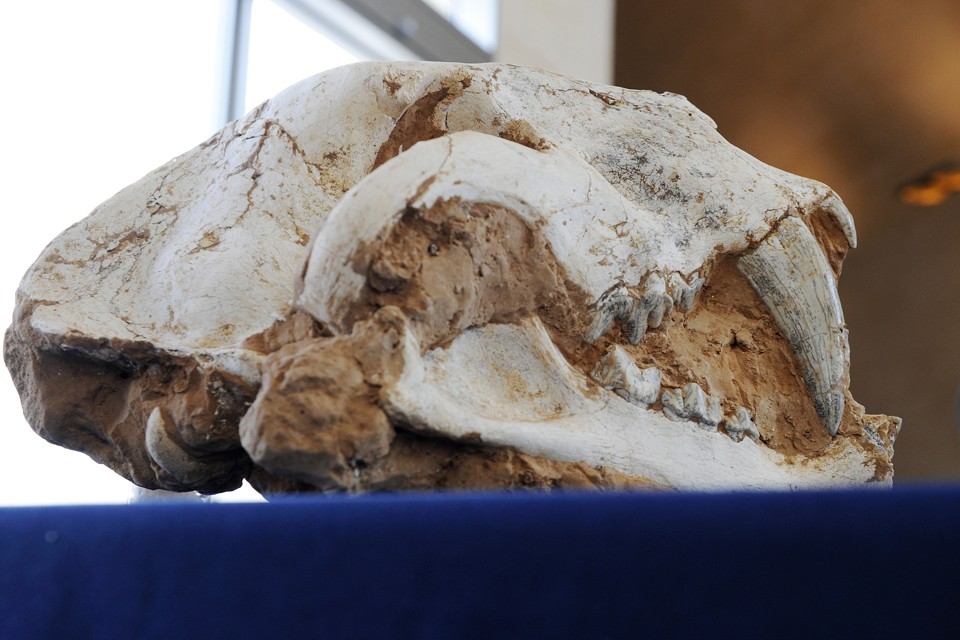A look back may give us a glimpse ahead as well. Interesting look at history and environmental evolution and its impact on life.
How Climate Change Unleashed Humans Upon South America’s Megabeasts
A new study suggests
that giant bears, sloths, and saber-toothed cats died because warming
temperatures cocked the gun, and people pulled the trigger.

In the 1930s, Junius Bird, an American archaeologist in the mold of Indiana Jones, found a clue in an innocuous rock shelter near the southernmost tip of Chile. Within it, he uncovered ancient knives, spear points, arrowheads and other stone tools, together with the bones of large animals like horses and lumbering ground sloths. Those discoveries, in what is now known as Fell’s Cave, were among the first to suggest that prehistoric humans hunted the megafaunal menagerie to extinction.
Paleontologists would soon level the same accusation at early humans from other continents, where titans like mammoths and woolly rhinos also disappeared. Meanwhile, South America remained neglected. It wasn’t clear when the continent’s giants disappeared, or why. “Traditionally, it’s been this mystery area,” says Alan Cooper form the University of Adelaide. But it’s a mystery that his team, including climatologist Chris Turney and evolutionary biologists Jessica Metcalf and Ross Barnett, have come closer to solving.
During the process, they used carbon-dating to check how old the fossils were. “We noticed that the dates coming back were grouping together quite tightly,” says Cooper. The llama and jaguar, along with the ground sloth, saber-toothed cat, short-faced bear, and South American horse all lived until around 12,300 years ago, and then disappeared. It was as if they had simultaneously crashed into an invisible wall. They all existed, and then they all didn’t. Why?
Humans seemed like unlikely culprits. Archaeological evidence from other caves show that people were living in southern Chile by at least 14,600 years ago, and co-existed with the megabeasts for a couple of millennia. “You’ve got humans knocking at the gates of Patagonia well before the extinction,” says Cooper. “It’s not a blitzkrieg. It’s anything but.”
A changing climate was a more likely suspect. The team noticed that the giant beasts went extinct a few centuries after a prolonged cold spell that gripped Patagonia between 14,400 and 12,700 years ago. As the glaciers retreated and temperatures rose, the giant beasts disappeared. “That’s a clear signal. Humans arrive. It gets cold. Nothing happens for 2,000 years,” says Cooper. But once temperatures started climbing again, “bam, the megafauna are dead very quickly.”
While South America was going through its cold spell, North America was warm. And when the south heated up, the north cooled. The two sister continents see-sawed in climate but in both cases, the big animals disappeared during the warming stints. “It’s as close as you can get to a replicated experiment,” says Cooper. “Cold equals okay, warming equals death.”
Why did warming climates doom the megafauna? It’s not clear, but Cooper has some guesses. The rising temperatures brought summer droughts, variable rainfall, and other weather anomalies. They also fueled the rapid growth of forests, which broke up the open habitats that these large animals were used to.
This fits with a growing sense from other parts of the world that neither climate change nor humans was solely responsible for killing the megafauna. Instead, they acted synergistically. “Warming might be the magic ingredient that activates or accelerates our natural destructive tendencies,” says Cooper.
“Or cold shuts us down.” Either way, climate change cocked the gun, and people pulled the trigger.
“The evidence from the fossil record demonstrates the rapidity with which extinctions can occur and ecosystems can collapse when species are squeezed by multiple stressors that limit their ability to track habitat changes,” says Elizabeth Jeffers from Oxford University. And “these processes—rapid climate warming and habitat fragmentation by humans—are occurring today,”
Thanks to us, the world is getting warmer, and large animals like elephants and rhinos are dying out. These are typically regarded as independent crises, caused by greenhouse gases and poaching respectively. But maybe the death of today’s giants is partly driven by the same warming-related strife that doomed their prehistoric counterparts. “It becomes really pressing to work out what aspects of warming allow humans to be that much more destructive than normal,” Cooper says.

No comments:
Post a Comment